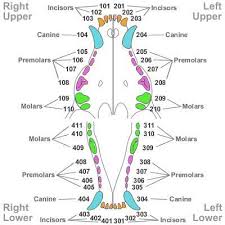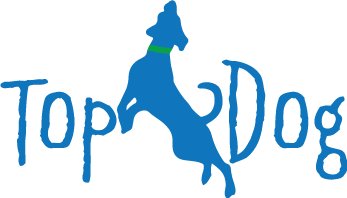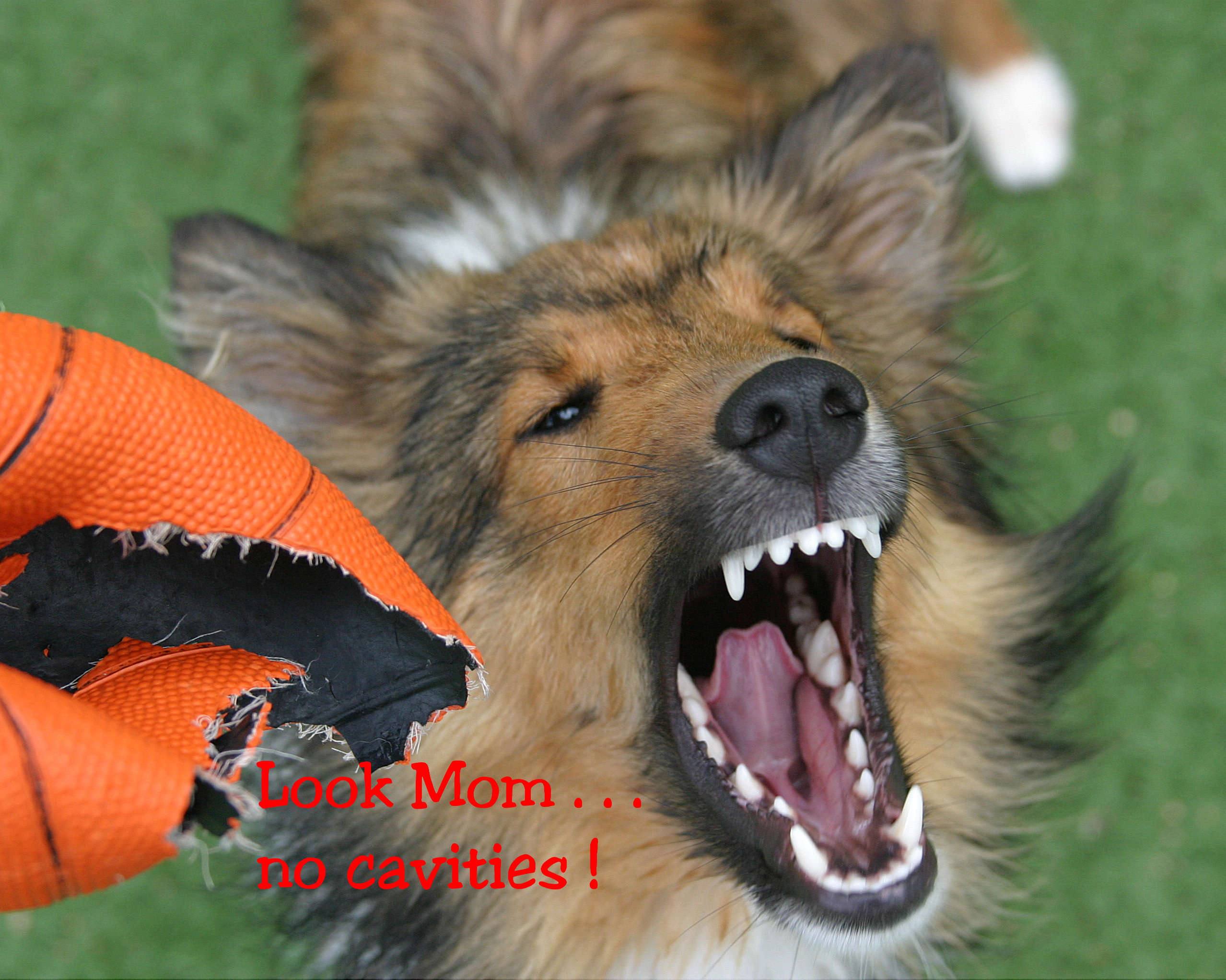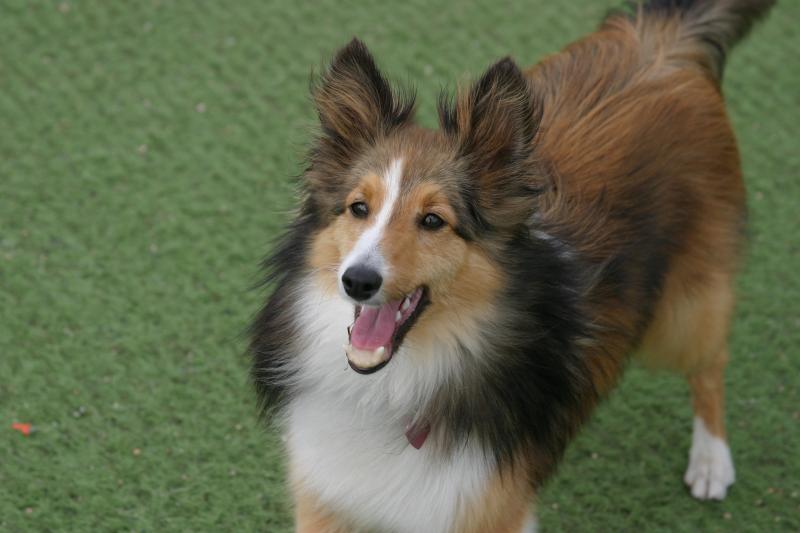February is dental health month for dogs . . . My mom talks often about dental care. But did you know that 85% of dogs over the age of 4 have dental disease? Yikes! Not only does it cause bad breath but it can lead to infection, abscess, and heart issues as well as damage to other organs. So, get us regular checkups and consider brushing our teeth daily.
We talk a lot about dental care but seldom about orthodontic dentistry for dogs.
WHAT??? Dental braces for a dog??? . . . Are you kidding? NOPE! Look at me!
I was born with a crooked jaw and as a result my teeth were misaligned and one of my canines drifted out. Back then, dentistry was not so sophisticated and I had a retainer but with my crooked jaw, it improved but not perfectly, so I have a snaggle tooth . . . my mom says it’s cute!
The world of dog medicine has come a long way in the past 15 years and that includes orthodontics. While not common, dogs can get braces . . . not for aesthetic reasons as we often do with people, but there are certain conditions with a dog’s teeth that could lead to great discomfort or medical problems resulting from miss-aligned or mal-formed teeth, caused by genetic predisposition, retained puppy teeth, jaw trauma, or even from an inappropriate level of tug.
Let’s look at the anatomy of the teeth . . .
Dogs have 28 primary or puppy teeth and 42 adult teeth. The puppy teeth come in around 3-12 weeks of age and are replaced by adult teeth at 4-6 months. Sometimes the baby teeth are not pushed out by the adult teeth and that can lead to problems . . . however don’t panic if the puppy teeth and adult teeth are both present at a young age. As the dog reaches the 6-month mark, those teeth most often fall out on their own. My sister Cricket had all kinds of trouble with retained baby teeth after her adult teeth came in but within 2 months the baby teeth fell out and she has a perfect mouth.

The small teeth in the front and between the canines are the incisors . . . 6 upper and 6 lower, used for nibbling, grooming and holding the tongue in place.
The canines are the “fang like” teeth on either side, upper and lower, 4 total. These teeth are used for ripping, for protection if needed, and also for holding the tongue in the mouth.
Behind the canines are the pre-molars . . . 4 upper and 4 lower on each side, used primarily for chewing food and toys.
The molars . . . 2 upper and 3 lower on each side, are the teeth used in wolves for crushing the bones of their prey, and in dogs today for chewing on bones or a large biscuit.
If any of these teeth, particularly the canines, are misaligned it can cause lots of trouble. Loose or crooked teeth, trouble eating, or a painful mouth can be signs that your dog needs to see the vet for a dental checkup.



